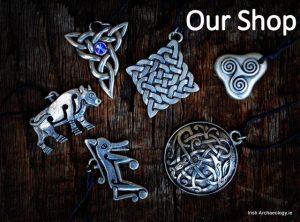Just after reading a very interesting article in the latest issue of Archaeology Ireland (Spring 2011). The article discusses how the crane, a large and colourful bird which is related to the heron, was once very common in Ireland, only becoming extinct c. 300 years ago. The authors, Lorcan O’ Toole and Ronan O’ Flaherty, suggest that this impressive bird may have had a special place in the Irish psyche. During the early medieval period it was often associated with kings and saints, while eating its flesh was a social taboo. References also exist to its association with druids who apparently took on the stance of a crane when casting spells or curses. The bird frequently appears in Irish mythology and its association with the mystical is also often seen in other cultures worldwide throughout the ages. A feature of the various cults surrounding the bird is the prevalence of ‘Crane dances’ in their paraphernalia.

This brought the two authors to a series of rock art depictions from Mont Bego, Italy which show a number of people holding halberds in what appears to be a ritualised fight or dance. Could this be a representation of a ‘Crane dance’ ? When hafted like in the Mont Bego depictions the halberd looks remarkably like the beak, head and neck of a crane. The halberd was always a puzzling object as it would have been a very weak and ineffective weapon. This new theory that it, instead, may have been related to a ritualised dance is compelling.

.




The use of late Neolithic and Bronze Age halberds as cerimonial objects is very likely, as most well crafted weapons were symbols of social status; that said, and having studied this kind of weaponry for a while, I can’t agree with you that it was innefective and served no practical purpose.
The halberd was a terrifying weapon made for piercing through anything; whatever armor was available at the time, it wouldn’t stop the blow from a stone or metallic blade, and a deep puncture wound at the time was virtually untreatable, if it didn’t outright kill you.
Do you have a reference for the mention of druids using the crane stance?
The halberd appears throughout Europe during the late Neolithic and early Bronze Age, is there any evidence that it originated in Ireland? If so the Crane dance ritual that it might be associated with could have spread to Italy where the rock art is situated. Is there any evidence from Italy that they also revered the Crane? The unfortunate name of ‘halberd’ archaeologists have given these Bronze Age artefacts has usually inferred that they were weapons, but in mine and many others opinions they would make very infective ones. I wonder if any experiments have been carried out relating to the fact that these objects resemble pick axes or large pecking hammers?
Interesting piece. As a small correction that doesn’t much effect the general thrust here, cranes are not particularly closely related to herons.
It’s a type of poleaxe used I believe for slaughtering cattle. Mounted on a short shaft, it would have been driven into the base of the skull at the nape of the neck, a very swift and effective method of slaughter, which would have resulted in instantaneous death. The reindeer herders of Siberia still use this method today, only they use a knife.